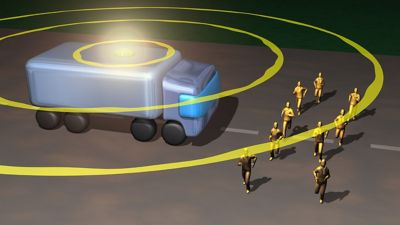-
-
Access Free Student Software
Ansys empowers the next generation of engineers
Students get free access to world-class simulation software.
-
Connect with Ansys Now!
Design your future
Connect with Ansys to explore how simulation can power your next breakthrough.
Countries & Regions
Free Trials
Products & Services
Learn
About
Back
Products & Services
Back
Learn
Ansys empowers the next generation of engineers
Students get free access to world-class simulation software.
Back
About
Design your future
Connect with Ansys to explore how simulation can power your next breakthrough.
Free Trials
ANSYS BLOG
April 7, 2023
Applying Existing Optics Technologies to Emerging Applications
Diffraction gratings aren’t new in the optics space. They are used in countless traditional optical systems, such as spectrometers, monochromators, and many other instruments. Diffractive gratings feature periodic structures that scatter light in one or multiple well-defined directions, depending on period and wavelength. The angle of the output beam depends on the incident angle, the distance between adjacent periodic structures in the grating, and the wavelength of the incident light.
Diffractive optics are distinguished from refractive optics because of the ways they direct light. With traditional refractive lenses, light bends because it changes speed as it goes from outside to inside the lens, then back out again. The amount that the beam bends depends on the index of refraction of the lens material and the shape of the lens itself.
Diffractive optics also bend light based on their index of refraction and physical geometry, but that geometry is at the microscale — the same scale as the wavelength of the light itself. Light scattered by periodic microscopic structures can interfere constructively in specific directions, sometimes at large angles with respect to the normal of the surface. In this way, diffractive optics are particularly powerful for steering light. With refractive lenses, this same action may require large, complex lens systems and/or lenses with complex geometry.
Knowing that size and weight are tightening constraints in the optics industry, why haven’t diffractive optics made it into the mainstream? Now that we’ve had a little diffractive optics refresher, we’ll walk through several emerging application areas where we’re seeing this technology in a new light — literally and figuratively.

Diffractive Optics Applications Abound in the Automotive Sector
Opportunities to use diffractive optics are appearing across the automotive space, as cars now have more cameras than they’ve ever had before. Reducing their size and cost through hybrid optics solutions and simpler integration is an attractive idea.
For example, lidar requires a laser beam, which is usually of a single wavelength. Diffractive optics are capable of steering this monochromatic light with fewer cumbersome mechanical parts. In exterior automotive lighting, saving space in the light projector module allows more flexibility in designing light signatures. Diffractive optics could help designers avoid effects like chroma dispersion around the front projection by adding opposite dispersion to compensate for refractive optics.
Looking ahead to augmented reality head-up displays (AR HUDs), diffractive elements can be designed into smaller image projection units to save space under the dashboard, coatings on the windshield for better coupling performance, or directly into the glass for HUDs positioned within the thickness of the windshield. Hologram-integrated windshields still face fabrication challenges, but they accommodate a larger field of view. The projection unit can also be placed freely, unlike a traditional mirror design in which positioning is more limited.

Hybrid Optics Opportunities in Consumer Electronics
When it comes to cell phones, camera lenses, and tablet displays, consumers are concerned with imaging performance; yet, there’s also a desire for smaller, thinner handheld devices. Engineers face related challenges with AR glasses and head-mounted displays (HMDs). To improve user experience and overall adoption, they must work to reduce size and weight while maintaining high image quality.
Consumer electronics is ripe with opportunities to leverage diffractive optics in hybrid solutions. By pairing traditional lenses with diffractive optics, each component is well positioned to do what it does best. Traditional optics are mainly used for projection systems and are responsible for image quality and brightness. Diffractive optics, like waveguides and holographic reflectors, are used to bring the image from the projection system into human eye using smaller components. When those functions are divided, each can be optimized for performance.

There’s still a lot of research and development happening to figure out where it makes sense to leverage diffractive optics — and where it doesn’t. Engineers are exploring these solutions on an application-by-application basis because the reality is that you can achieve smaller component sizes without diffractive optics. If size is the main constraint, diffractive optics isn’t the de facto answer. It’s the custom light distribution profile that gives it an advantage over other solutions.
Even still, the cost to manufacture diffractive optics at scale is still a barrier in many cases, and that won’t change until we can leverage fabrication techniques from small-scale electronics manufacturing to better compete with custom lens solutions. Currently, the most promising technology for low-cost diffraction grating is nanoimprint; however, it’s still a long journey from design to stable fabrication.
For more information on accurately simulating 1D/2D gratings in the design of optical systems, review this dynamic workflow between Ansys Lumerical RCWA and Ansys Zemax OpticStudio.